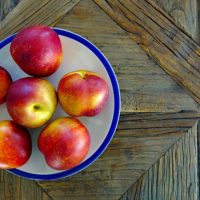The Halloween Candy Quandary
Every year, the question is the same. What kind of candy to buy for those little trick-or-treaters?
Here are some options:
- Buy your favorite in case there’s candy left over
- Buy your least favorite in case there’s candy left over
- Don’t buy any and leave home for the evening
- Buy your state’s favorite and hope to please most of the little goblins
- Buy a big variety pack and pass out your favorites or least favorites first, depending on if you prefer answer A or B
- Give out something on the healthier side and risk getting your pumpkin smashed
Should you buy your favorite, you may consider freezing leftovers (if it’s a kind you can freeze) so that you aren’t tempted to eat too much at once. 
If you buy your least favorite, give the last tricksters any leftovers and turn out your porch light.
Disappearing for the evening gets you out of any big candy decisions.
Buying your state’s favorite makes good sense, and perhaps you’ll make the locals happy.
According to a recent survey (which in my mind means it’s just fun info), here are the favorite Halloween candies of a few states:
- Indiana: Peanut M&M’s
- Ohio: Reese’s Peanut Butter Cups
- Michigan: Kit Kat
- Illinois: Airheads
- Florida & California: Jolly Rancher Hard Candy (REALLY? Maybe because the chocolate melts.)
- Georgia: Skittles
- Kentucky: 100 Grand Bar
- Wisconsin: Twix
I think there may be some dental offices that take candy after Halloween and do something with it that benefits others. It’s been a while since I’ve had little ones, so maybe not.
At any rate, it’s fun to see kids and adults get decked out in their costumes and be someone or something else for an evening.
And should you happen to overdo the candy thing, just eat a little bit better with your next meal or snack.
A mixed green salad with the addition of tomatoes, cucumbers, peppers, onions, or any other vegetable you choose, will get you right back on track. 
As for our treat selection? Reese’s Peanut Butter Cups and Plain M&M’s, since that’s what Mr. Non-Compliant likes best. We usually get only a handful of trick-or-treaters, so Mr. NC has a small stash in the freezer for emergencies.
Could it be that the neighbors think I’ll hand out those mini bags of apples or some vegetable, so they skip our house?
Perhaps. At any rate…
…Wishing you a delightfully scary Halloween!
BOO!
Health Coach Carol
“A person should always choose a costume which is in direct contrast to her own personality.”—Lucy Van Pelt, “It’s the Great Pumpkin, Charlie Brown”








